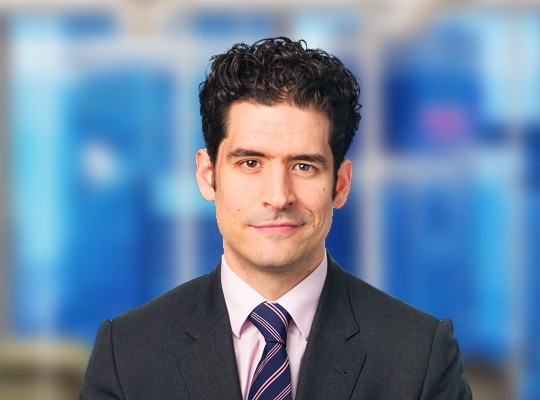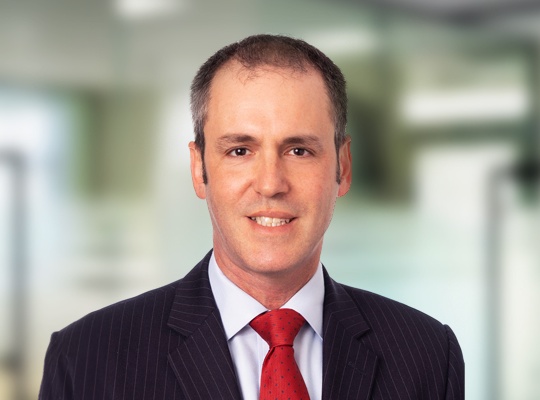Setting Aside Transactions at an Undervalue: Easier Said Than Done?
Key Takeaways
- UK Supreme Court decision reaffirms that debtors cannot use corporate structures and the principle of separate corporate legal personality to avoid obligations to their creditors.
- Transactions at an undervalue made by a debtor’s company can be reversed under Section 423 of the Insolvency Act 1986 if they have the intention of frustrating the owner’s creditors.
- English High Court decision finds that such actions amount to “disreputable conduct or serious wrongdoing”, and therefore a high standard of proof applies to applications to reverse such transactions.
- Creditors must ensure that they have sufficient evidence, particularly as to the debtor’s intentions, to support any application for this relief.
Introduction
On 19 February 2025, the Supreme Court handed down its judgment in El-Husseiny and another v Invest Bank PSC.1 These proceedings were started by Invest Bank (the “Bank”), following judgments that the Bank had obtained in the UAE against Mr Ahmad El-Husseiny. The Bank identified that Mr El-Husseiny had valuable assets in the UK against which it sought to enforce, but it alleged that Mr El-Husseiny procured and arranged various asset transfers in order to put those assets out of the Bank’s reach.
The Bank sought relief under section 423 of the Insolvency Act 1986 (the “Act”), which allows for the reversal of certain transactions at an undervalue where the transactions are intended to put the assets out of reach of, or otherwise prejudice the interests of, creditors. The Court of Appeal found2 that section 423 actions can be brought in respect of transactions to which the debtor is not personally a party (the “Capacity Point”), and where the assets in question are not owned legally or beneficially owned by the debtor (the “Beneficial Interest”). For more detailed analysis of the Court of Appeal’s reasoning, please see our previous OnPoint on this case.3
The Supreme Court’s Decision
Mr El-Husseiny and his son, Ziad, appealed against the Court of Appeal’s ruling. The scope of the appeal to the Supreme Court was narrow, focussing only on the Beneficial Interest Point. In its judgment, the Supreme Court only looked at one of the asset transfers, namely the transfer of a property at 9 Hyde Park Garden Mews (“9HP”), as an example to test the legal principles relating to section 423. The transfer of 9HP was made by one of Mr El-Husseiny’s companies, Marquee Holdings Limited (“Marquee”), to Ziad in June 2017 for no consideration (the “9HP Transfer”). Mr El-Husseiny owned all of the shares in Marquee, with Marquee’s share price significantly diminishing as a result of the 9HP Transfer.
In reaching its judgment, the Supreme Court considered principles of statutory construction, looking at the provision in the wider context of the Act and the purpose for which the provision was enacted. On this basis, it unanimously upheld the Court of Appeal’s judgment, finding that section 423 was not limited to transactions involving assets owned by the debtor. Rather, section 423 can include transactions in which the debtor procures or arranges for the transfer of an asset legally and beneficially owned by a company that he owns.
The Supreme Court found that the appellants’ case largely “require[d] important words to be read into the section because those words are simply not there”. A “straightforward” reading of section 423 did not suggest a requirement for a transaction to involve property belonging to the debtor. Had the provision been intended to impose such a requirement, it would have said so explicitly. Furthermore, the purpose of the provision was to address the need to deal with debtors attempting to defeat action by their creditors. The transfer of a valuable asset by a solvent company for no consideration would necessarily result in a diminution in the value of the debtor’s shares in that company. As this would have the effect of prejudicing creditors’ interests, the Supreme Court found that the 9HP Transfer was capable of constituting a transaction for the purposes of section 423.
Applying Section 423 in Practice
In the meantime, in parallel proceedings, the Bank had pursued its application for relief under section 423. On 21 November 2024, the High Court handed down a first instance Judgment refusing the relief sought.
The High Court looked at the various transfers of assets that Mr El-Husseiny made, and caused his companies to make, with a view to determining whether it could use its powers under section 423 to reverse the transfers. The assets concerned in the Bank’s claim include several London real estate properties and shares, including 9HP. Given that the Supreme Court’s judgment looked only at the 9HP Transfer, this section of this article focusses primarily on the High Court’s findings with regard to the 9HP Transfer. These clearly illustrate the evidential challenges that creditors can face in trying to use section 423 to set aside transactions.
In the course of the High Court proceedings, the Bank argued that the Court should draw the inference that Mr El-Husseiny transferred the assets, including 9HP, to defeat the Bank’s claim. This was on the basis that Mr El-Husseiny did not attend the trial nor give disclosure, as the Bank argued that Mr El-Husseiny was trying to ensure that “adverse documents or evidence do not emerge in these proceedings”. However, the High Court found that the Bank was not entitled to an adverse inference against Mr El-Husseiny “as of right” and that the inference that the Bank was suggesting that the Court adopt could not be drawn from an analysis of the facts.
In trying to ascertain Mr El-Husseiny’s purpose behind the 9HP Transfer, the High Court pointed to several meetings between Mr El-Husseiny and his financial advisor at which Mr El-Husseiny enquired about “proposed changes in UK tax law regarding residential properties for inheritance tax purposes”. The High Court concluded that these tax considerations were the purpose of the 9HP Transfer, finding that the Bank had failed to discharge the high evidential burden required to set aside the 9HP Transfer.
The High Court therefore found that the Bank failed to establish that Mr El-Husseiny arranged the 9HP Transfer with the purpose of either putting 9HP out of the Bank’s reach, or of otherwise trying to prejudice the Bank’s interests. It noted that an allegation that a transaction was carried out for one of these purposes amounted to an allegation of “disreputable conduct or serious wrongdoing”, despite dishonesty not being an element of section 423. This is a high standard to be applied, requiring a clear pleading of the facts giving rise to the Bank’s inferential case of Mr El-Husseiny’s alleged purpose, to be supported by “cogent evidence”.
Comment
Creditors will welcome the Supreme Court’s confirmation that debtors cannot use corporate structures and the principle of separate corporate legal personality to avoid obligations to their creditors.
However, the High Court judgment highlights the practical difficulties of obtaining section 423 relief. The High Court’s decision to treat the alleged conduct as akin to fraud sets the evidential bar very high and makes it difficult for creditors to rely on inference alone. It will be interesting to see if the High Court’s decision on this point is appealed but, in the meantime, creditors will need to think carefully about how they can obtain sufficient evidence to support such allegations particularly in relation to the debtor’s intentions in entering into the transactions in question. Failure to do so could mean that whilst the circumstances in which section 423 relief can be obtained have become broader in theory, it becomes harder to obtain such relief in practice.
Contributors
Thank you to Nik Sharma for his contribution to this article.
Related Professionals
Related Services



